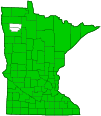hedge bindweed
(Calystegia sepium)
Overview • Description • Distribution • Taxonomy
Flowers are produced from June to September. They open in the morning and close at night, but often remain open on moonlit nights. They are not fragrant. Insects may be attracted to the warmth inside the funnel, which can be 5° above the air temperature. |
||
Description |
||
Hedge bindweed is a perennial vine that rises on multiple stems from a deep, creeping rhizome and a deep, fibrous root system. The rhizome is branched and can be over 10′ long. The stems are light green or red, hairless, freely branched, and either angled or round. They are usually awkwardly climbing over adjacent vegetation or structures (scrambling), occasionally prostrate on the ground but not rooting at the tip (trailing). The stem grows in a spiral, at least toward the tip, curving around nearby plants (twining) in a counterclockwise direction, allowing the stem to climb. They are usually 1½′ to 10′ long but can reach up to 13′ or more. The leaves are alternate, 2″ to 4″ long, and 2¾″ to 3″ wide. They are on leaf stalks that are always more than, usually much more than, half as long as the midvein of the attached leaf. The leaf blade is triangular in outline, arrow-shaped, pointed at the tip, and indented at the base. The basal lobes are trapezoidal and relatively spreading (directed outward). The sinus between the lobes is frequently broadly U-shaped. The upper and lower surfaces are hairless. The margins are untoothed. The inflorescence is a solitary flower rising from the leaf axils above the midpoint of the stem. The flowers are large and conspicuous. They are on 2″ to 6″ long flower stalks. There are two conspicuous, leaf-like appendages (bracts) at the base of the flower. The bracts are ½″ to 1″ long and ⅜″ to 11⁄16″ wide. They overlap only near the base. There are 5 petals, 5 sepals, and 5 stamens. The sepals are green, elliptic to narrowly egg-shaped, and 7 ⁄16″ to ⅝″ long. They are more or less hidden by the bracts that subtend the flower. The petals (corolla) are fused at their base and for most of their length into a funnel-shaped tube and separated at the tip into five very shallow lobes. The corolla is usually white, sometimes pink or pinkish tinged between white ribs, and usually 1¾″ to 2½″ long and wide. The stamens are ⅞″ to 1 3 ⁄16″long and do not protrude from the corolla. The anthers are yellow. There is 1 style with 2 stigmas. The fruit is an egg-shaped, ⅜″ to ⅝″ long capsule with 2 to 4 seeds. ________________________ The description above refers to Calystegia sepium ssp. angulata. |
||
Similar Species |
||
Black bindweed (Fallopia convolvulus) is a shorter vine, no more than 40″ in length. The stems and leaves do not have a milky latex. The leaf stalk has an ocrea at the base. The flower is small, ⅛″ to 3 ⁄16″ long, and not showy. The fruit is an achene. Common morning-glory (Ipomoea purpurea) has rounded, heart-shaped, not triangular, arrow-shaped, leaves. The basal lobes of the leaf blade are broadly rounded, not squared off or pointed. The flower is blue to purple. Field bindweed (Convolvulus arvensis) is a smaller plant. The leaves are smaller, 1″ to 2″ in length. The basal lobes of the leaf blade are pointed, not trapeziodal. The bracts are much smaller and are positioned on the stem well below the inflorescence. The flowers are smaller, 1″ or less long and wide. Ivy-leaved morning-glory (Ipomoea hederacea) has 3-lobed leaves. The flower is blue to purple. Low bindweed (Calystegia spithamaea) stem is erect, does not twine, and does not get over 20″ long. |
||
Distribution |
||||
|
Sources |
|||
| 4/18/2023 | ||||
Taxonomy |
|||
| Kingdom | Plantae (Plants) | ||
| Division | Tracheophyta (Vascular Plants) | ||
| Subdivision | Spermatophytina (Seed Plants) | ||
| Class | Magnoliopsida (Dicots) | ||
Order |
Solanales (nightshades, bindweeds, gooseweeds, and allies) | ||
Family |
Convolvulaceae (bindweed) | ||
| Subfamily | Convolvuloideae | ||
| Tribe | Convolvuleae | ||
Genus |
Calystegia (false bindweeds) | ||
Subordinate Taxa |
|||
American bindweed (Calystegia sepium ssp. americana) Appalachia false bindweed (Calystegia sepium ssp. appalachiana) Bingham's false bindweed (Calystegia sepium ssp. binghamiae) cosmopolitan hedge bindweed (Calystegia sepium ssp. erratica) creeping hedge bindweed (Calystegia sepium ssp. angulata) hedge bindweed (Calystegia sepium ssp. baltica) hedge bindweed (Calystegia sepium ssp. roseata) hedge bindweed (Calystegia sepium ssp. sepium) hedge bindweed (Calystegia sepium ssp. spectabilis) hedge bindweed (Calystegia sepium var. fraternuiflora) hedge bindweed (Calystegia sepium var. japonica) hedge bindweed (Calystegia sepium var. repens) marsh morning glory (Calystegia sepium ssp. limnophila) |
|||
Synonyms |
|||
Convolvulus sepium |
|||
Common Names |
|||
creeping hedge bindweed hedge bindweed hedge false bindweed larger bindweed |
|||
Glossary
Bract
Modified leaf at the base of a flower stalk, flower cluster, or inflorescence.
Corolla
A collective name for all of the petals of a flower.
Rhizome
A horizontal, usually underground stem. It serves as a reproductive structure, producing roots below and shoots above at the nodes.
Scrambling
Climbing awkwardly over adjacent vegetation or structures.
Sepal
An outer floral leaf, usually green but sometimes colored, at the base of a flower.
Trailing
Prostrate on the ground and creeping, but not rooting at the tip.
Twining
Growing in a spiral usually around a stem of another plant that serves as support.
Visitor Photos |
|||||
Share your photo of this plant. |
|||||
| This button not working for you? Simply email us at info@MinnesotaSeasons.com. Attach one or more photos and, if you like, a caption. |
|||||
|
|||||
MinnesotaSeasons.com Photos |
|||||
Plant |
|||||
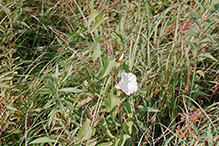 |
|||||
White flower |
|||||
 |
|||||
Pinkish-tinged flower |
|||||
 |
 |
||||
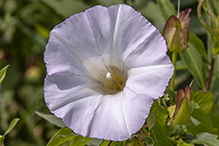 |
|||||
Pink flower |
|||||
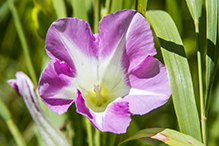 |
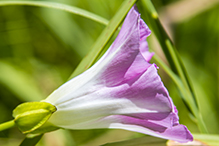 |
||||
 |
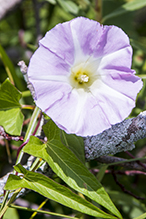 |
||||
Bracts |
|||||
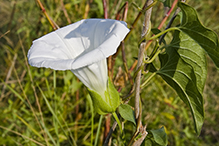 |
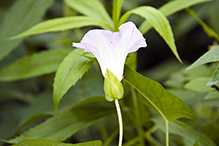 |
||||
 |
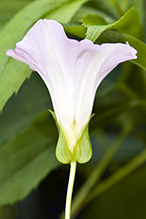 |
||||
Leaf |
|||||
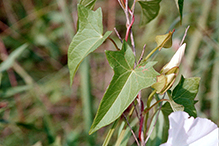 |
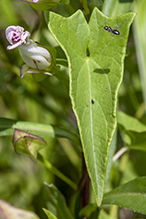 |
||||

Slideshows |
||
| Hedge Bindweed (Calystegia sepium) (Convolvulus sepium) Andree Reno Sanborn |
||

|
||
| Convolvulus sepium HEDGE BINDWEED Frank Mayfield |
||
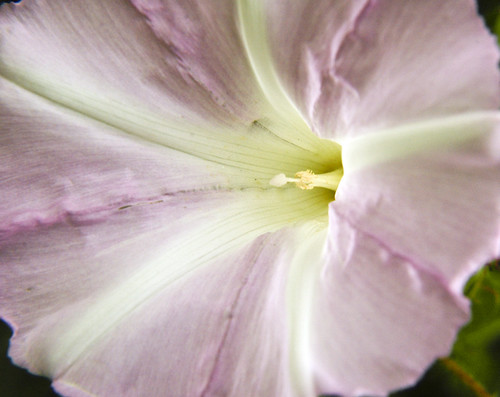
|
||

Visitor Videos |
|||
Share your video of this plant. |
|||
| This button not working for you? Simply email us at info@MinnesotaSeasons.com. Attach a video, a YouTube link, or a cloud storage link. |
|||
Other Videos |
|||

Visitor Sightings |
|||||
Report a sighting of this plant. |
|||||
| This button not working for you? Simply email us at info@MinnesotaSeasons.com. Be sure to include a location. |
|||||
| Missy Stangel 6/23/2017 |
Location: Cass Lake, Minnesota |
||||
MinnesotaSeasons.com Sightings |
|||||
Bertram Chain of Lakes Regional Park Carpenter St. Croix Valley Nature Center Carver Highlands WMA, South Unit Charles A. Lindbergh State Park Forestville/Mystery Cave State Park John Peter Hoffman Spring Brook Valley WMA Minnesota Valley State Recreation Area, Lawrence Unit Mound Spring Prairie SNA, North Unit Northern Tallgrass Prairie NWR, Pavia Unit Northern Tallgrass Prairie NWR, Rengstorf Unit Northern Tallgrass Prairie NWR, Spieker Unit Prairie Creek WMA, Koester Prairie Unit Richard M. & Mathilde Rice Elliott SNA Robert Ney Memorial Park Reserve Verlyn Marth Memorial Prairie SNA |
|||||

|
Created: Last Updated: © MinnesotaSeasons.com. All rights reserved. |
